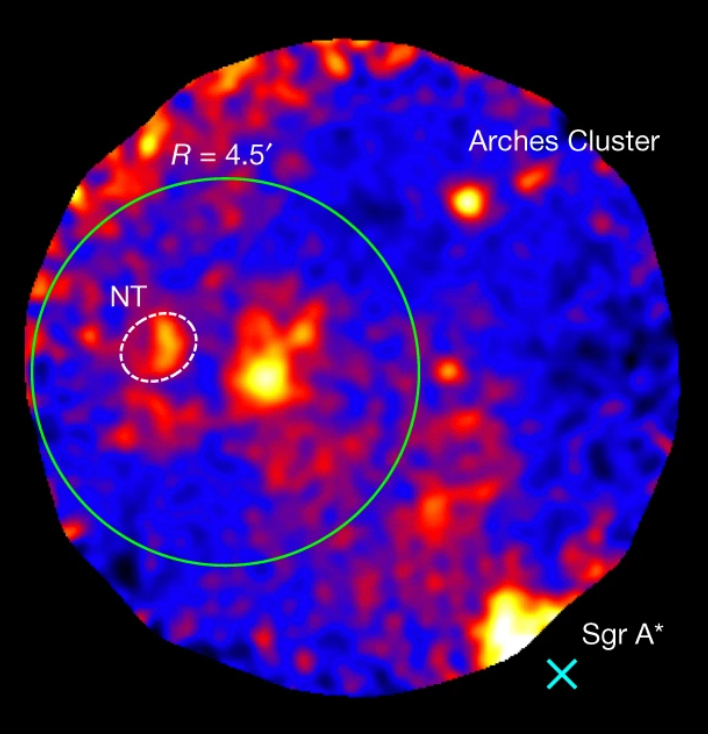
 Credit: Marin et al., 2023, Nature, vol. 619, 41
Credit: Marin et al., 2023, Nature, vol. 619, 41
A Brief Awakening of Our Galactic Monster
Like most galaxies, our Milky Way has a supermassive black hole at its center. This black hole is known as Sgr A*, since it lies in the constellation of Sagittarius. Sgr A* has a mass equivalent to about 4 million Suns, but is so small that, if placed at the center of the solar system, its event horizon would fit comfortably within the orbit of Mercury with lots of room to spare. How this monster got here is a mystery. We know that, in many other galaxies, such monsters actively feed on the interstellar matter (gas, dust clouds, stars) near them, causing an outpouring of high-energy radiation and charged subatomic particles. But unlike these active supermassive black holes (fortunately for us?) Sgr A* is observed to be unusually quiet. No one knows why, or whether this sleeping giant was more active in the past, or - excitingly - whether it will be more active in the future. We now have evidence that, indeed, Sgr A* has experienced bouts of high-energy activity in the past. The image above shows X-ray emission from a region of space near the center of the Galaxy, a few hundred light-years from Sgr A* (whose position is marked by a cross in the lower right) as seen by the Imaging X-ray Polarimetry Explorer, or IXPE for short. Although this region is the host of cold, dense molecular clouds, these cold clouds shine in high energy X-rays typically produced by gas at temperatures in excess of a million degrees, which suggests that the X-rays come from some nearby source and are simply being reflected by the clouds. If the X-rays are reflected, then they should have a significant degree of polarization, just like sunlight scattered off a lake is becomes polarized (which is why polarized sunglasses reduce glare from the reflected light). IXPE is unique in that, among all X-ray observatories currently in orbit around the earth, only IXPE is sensitive to the polarization of X-rays, which is related to the plane in which the electromagnetic waves oscillate. The IXPE polarization observations from the region in the green circle confirm that the X-rays show a significant degree of polarization, and the direction of polarization points back towards Sgr A*. This indicates that about 200 years ago (the light travel-time from Sgr A* to these molecular clouds), Sgr A* would have been as bright in X-rays as other actively feeding black holes - an astounding sight, if only we had had X-ray observatories back then to see it.
Published: September 25, 2023
<
HEA Dictionary ● Archive
● Search HEAPOW
● Other Languages
● HEAPOW on Facebook
● Download all Images
● Education ● HEAD
>

Each week the HEASARC
brings you new, exciting and beautiful images from X-ray and Gamma ray
astronomy. Check back each week and be sure to check out the HEAPOW archive!
Page Author: Dr. Michael F. Corcoran
Last modified Tuesday, 27-Feb-2024 10:06:52 EST


